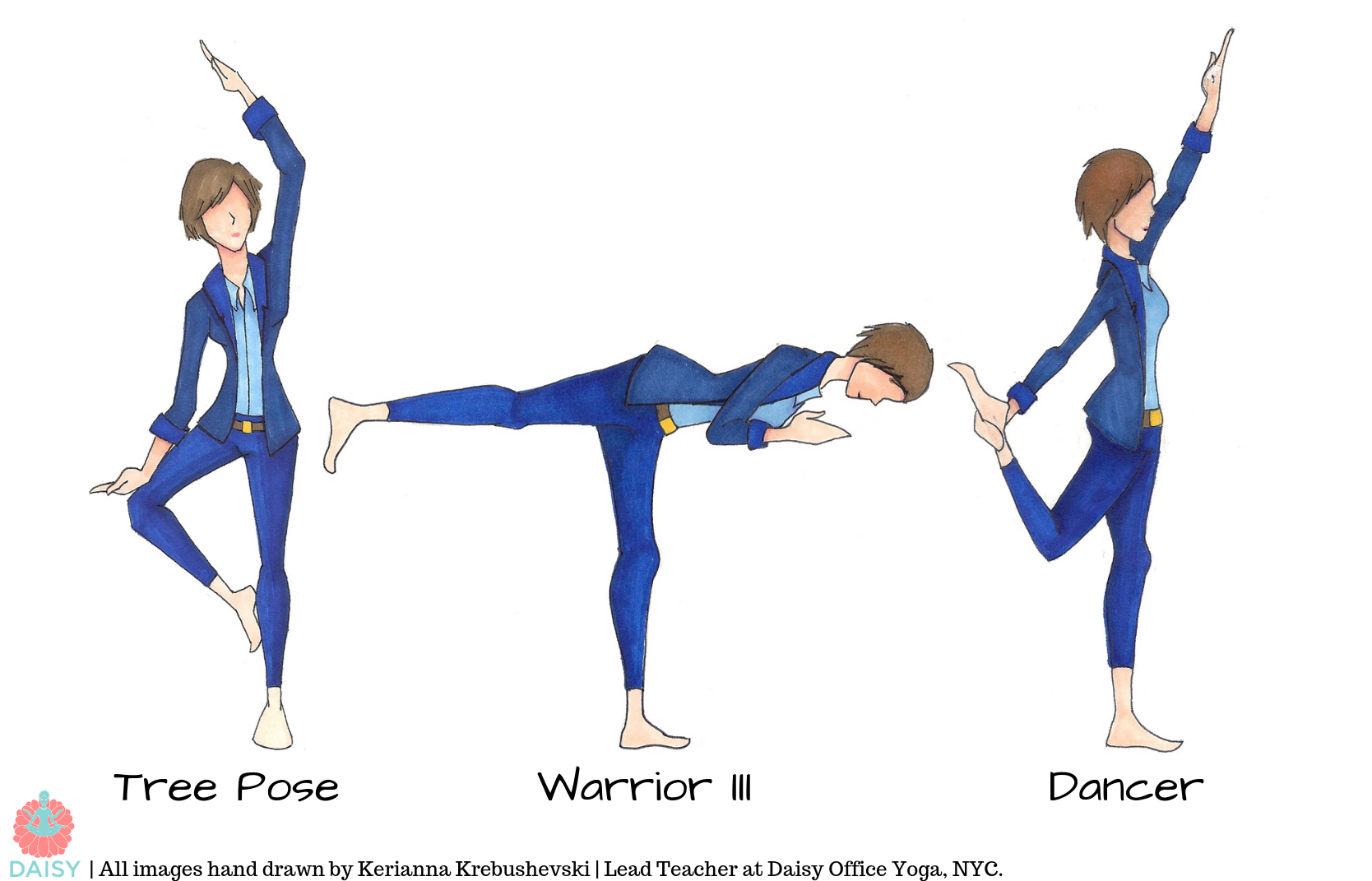Have you ever been told to just take things one thing at a time? It is so difficult to do in today’s high stimulus world. With higher demands and more competition at work, higher costs of living with stagnant wages, more information constantly bombarding us on the internet, and relationships and images to maintain on social media, we can be constantly caught up in a bunch of different thoughts, memories, worries and ideas.
If you are caught up in this whirlwind you are not experiencing the present moment, at least not fully. This can be distracting, overwhelming, and even debilitating at some points. (Have you ever experienced that feeling of so much to do where even to start?… or maybe even why bother?) So what do we do?
Balancing postures in yoga are a great, tangible tool to become aware of how all over the place our thoughts are. If we are in the past or the future, remembering, worrying, or planning, and we try to stand on one leg, we fall over. When our mind wanders, balancing can be a challenge.
The these physical techniques can be translated in your every day life to be more productive and to handle the heavy laden stimuli of today’s word. It will help you to feel more grounded, present, able to concentrate on one thing at a time, get things done more purposefully, and therefore reduce stress lessen anxiety, and improve quality of life. Here are 3 ways balance helps you to overcome these issues:
- When we balance we are forced to be in the present moment, free of distractions, concentrated on only what is happening in the now. In our lives we can be working on something, but still be distracted by the rest of our to-do list. We can find it impossible to focus on the present task. If we train our minds not to wander to distractions in a balance posture, we can bring that focus to our work lives too.
- Balance is not static. It is light and fluctuating. We should be able to breath and stay soft in a balance posture. If we lock up our body we are bound to fall over. If we can learn to continually micro adjust to the current situation, as our body does in a balance posture, then one strong wind won’t tear you down in your life as well.
- To balance you need a steady gaze. When we are on one leg in a posture like tree or dancer or even a complex lunge posture, we find a spot in the floor or wall to gaze at. If our eyes wander, our mind wanders, and our body wavers. This is mindfulness and intention in practice. You do not become aware of your wandering eyes until you do (the eyes will wander naturally taking in your surroundings and looking for dangers you may need to react to). Learn to set an intention, be mindful while you work. Become aware of when you expounding too much energy or not really getting anything done because you are distracted or tired.

Balance postures are great for people who find themselves getting overwhelmed during their day and have to learn how to find stasis; that calm, collected place of streamlined productivity. They also help people realize when things may need to change, or accept when maybe they just need a break off that one leg task. They help us breath through the tough times, to stay strong AND soft. Try out the three poses above and see how you fair, and then practice them regularly to improve your balance!


